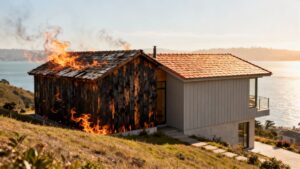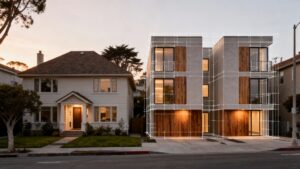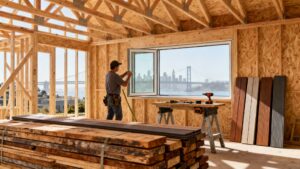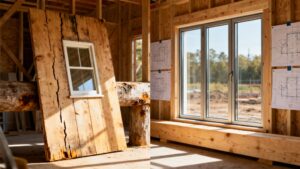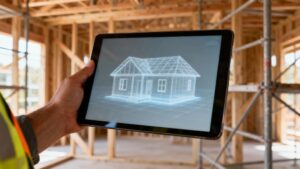Choosing the right windows for a project in the East Bay isn't just about aesthetics—it's a critical investment in a property's performance, comfort, and long-term value. For builders, architects, and homeowners in Oakland, Berkeley, or Walnut Creek, sourcing quality windows means striking a careful balance between design, budget, and the durability our unique regional climate demands.
How to Choose the Right Windows for Your East Bay Project
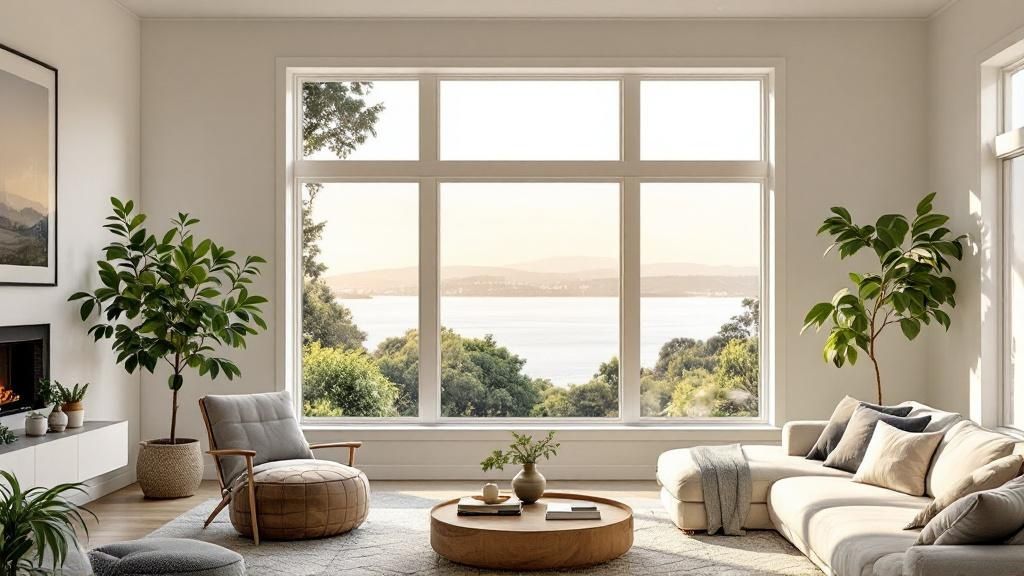
A smart window decision is foundational to any successful new build or remodel in the Bay Area. This choice impacts everything from daily comfort and energy bills to the property's final market value. This guide provides a practical framework for selecting the best windows that align with your design vision, budget, and California’s rigorous building codes.
Key Factors for Selecting Quality Windows in the East Bay
When we talk about "quality," it’s about specific performance features that stand up to local conditions. Builders and homeowners alike must consider how a window will perform over decades of use.
Here are the non-negotiables that define a quality window in our area:
- Durable Frame Material: The frame must be tough enough for the East Bay's varied microclimates. It needs to resist the damp, salty air near the San Francisco Bay and the dry heat found further inland.
- High-Performance Glazing: Double or even triple-pane glass is now standard. The real performance boost, however, comes from specialized Low-E coatings and inert gas fills that manage heat gain and prevent UV damage.
- Critical Energy Ratings: Understanding metrics like U-factor and Solar Heat Gain Coefficient (SHGC) is mandatory. These ratings are essential for meeting California’s Title 24 energy codes and ensuring client satisfaction.
A well-chosen window does more than frame a view. It actively works to make a home more comfortable, quieter, and more energy-efficient—a functional upgrade that delivers returns for years.
The East Bay real estate market is closely tied to these types of home improvements. As homeowners and builders invest in upgrades, windows meeting or exceeding Energy Star standards are a clear path to energy savings and higher property values. You can learn more about how these upgrades are shaping the 2025 East Bay real estate market. This sharp focus on performance is what makes choosing quality windows in the East Bay such a strategic move.
Your East Bay Window Selection Checklist
To simplify your decision-making process, this checklist covers the most important factors when comparing window options.
| Selection Factor | Why It Matters in the East Bay | What to Look For |
|---|---|---|
| Frame Material | Our microclimates range from damp and salty to hot and dry. The frame must resist warping, fading, and corrosion. | Fiberglass: Excellent durability and stability. Vinyl: Cost-effective and low-maintenance. Wood/Clad-Wood: Classic look with modern protection. |
| Energy Ratings (U-Factor & SHGC) | Title 24 compliance is mandatory. These ratings directly impact heating/cooling costs and indoor comfort. | Low U-Factor (e.g., ≤0.30): Better insulation to keep heat in during winter. Low SHGC (e.g., ≤0.25): Blocks solar heat gain to keep homes cool in summer. |
| Glazing (Glass Package) | Manages sunlight, UV damage, and outside noise—all common concerns in dense or sun-exposed neighborhoods. | Double-pane is the minimum. Low-E coatings (like Low-E2 or Low-E3) are essential. Argon gas fill for improved insulation. |
| Sound Transmission Class (STC) | Important for homes near busy streets, BART lines, or airports to ensure a peaceful indoor environment. | An STC rating of 30 or higher offers noticeable noise reduction. Laminated glass options provide superior soundproofing. |
| Warranty | A strong warranty reflects the manufacturer's confidence in their product's long-term performance and durability. | Look for comprehensive coverage on both the glass seal (at least 20 years) and frame/hardware (at least 10 years). |
This table covers the core technical details you'll need to discuss with your supplier or contractor. Getting these right ensures your new windows will be a lasting asset, not a future problem.
Meeting East Bay Climate and Energy Code Demands
The East Bay isn’t a single climate zone. You have cool, salt-tinged air in Alameda and intense, dry summer heat in Livermore. Selecting the right windows requires a strategy that respects these unique microclimates.
On top of local weather, every window must meet California's strict Title 24, Part 6 Building Energy Efficiency Standards. For any new construction, addition, or window replacement, these codes are non-negotiable. As a builder or architect, proving compliance is a critical step for securing permits.
Navigating Performance Ratings and Title 24
To ensure compliance, you must understand the language of window performance. The two most important values on any NFRC label are the U-factor and the Solar Heat Gain Coefficient (SHGC).
- U-factor measures how well a window prevents heat from escaping. A lower number means better insulation, which is key for keeping homes in the Berkeley Hills warm on a cool night.
- SHGC measures how much of the sun's heat a window blocks. A lower SHGC is vital for homes in hotter areas like Walnut Creek, where it can significantly reduce air conditioning costs.
According to the California Energy Commission, Title 24 sets specific U-factor and SHGC targets based on climate zones. A project in Oakland (Climate Zone 3) will have different requirements than one in Livermore (Climate Zone 12).
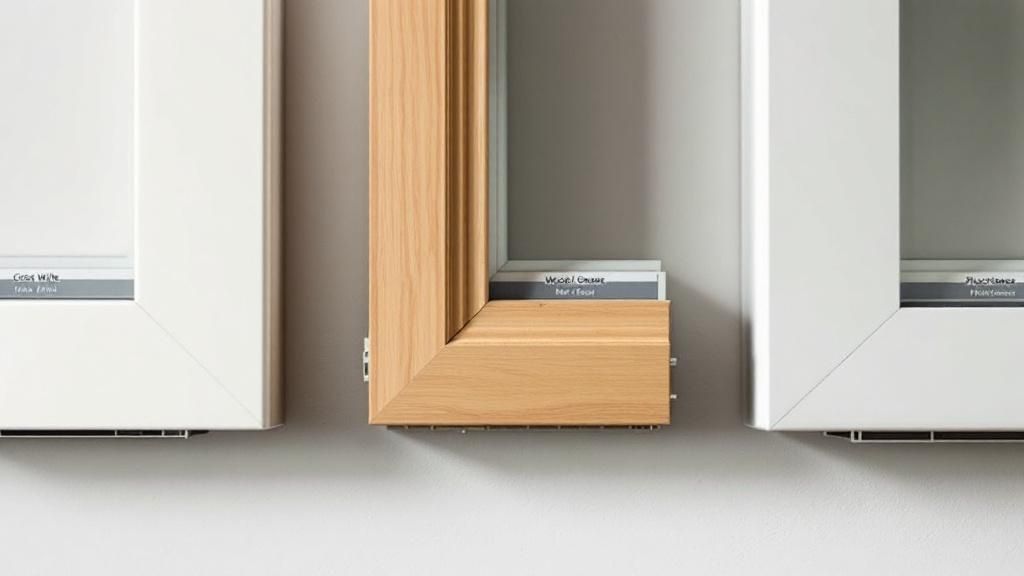
A common mistake is specifying the same windows for every project, regardless of location. A window package perfect for a foggy coastal home will lead to high cooling bills for a client in a sun-drenched inland valley.
For contractors and homeowners, the goal is a smart, informed decision that balances code compliance with real-world comfort and energy savings. To learn more, explore our guide to energy-efficient windows. Choosing correctly ensures a project passes inspection and delivers the lasting performance clients expect.
Comparing Window Materials For Bay Area Homes
Your choice of window frame material directly impacts durability, maintenance requirements, and architectural style. When selecting quality windows in the East Bay, consider how each material performs in our diverse microclimates.
Let's review the most popular options for projects in Berkeley, Oakland, and beyond.
Fiberglass for Unmatched Durability
Fiberglass has become a go-to recommendation from Bay Area builders for good reason. Made from strands of glass, it expands and contracts at nearly the same rate as the window panes. This thermal stability makes fiberglass incredibly resistant to warping or cracking as temperatures fluctuate.
Its strength allows manufacturers to design thinner, modern frames that maximize natural light without sacrificing structural integrity. For high-exposure locations or clients who want set-it-and-forget-it performance, fiberglass is a smart investment.
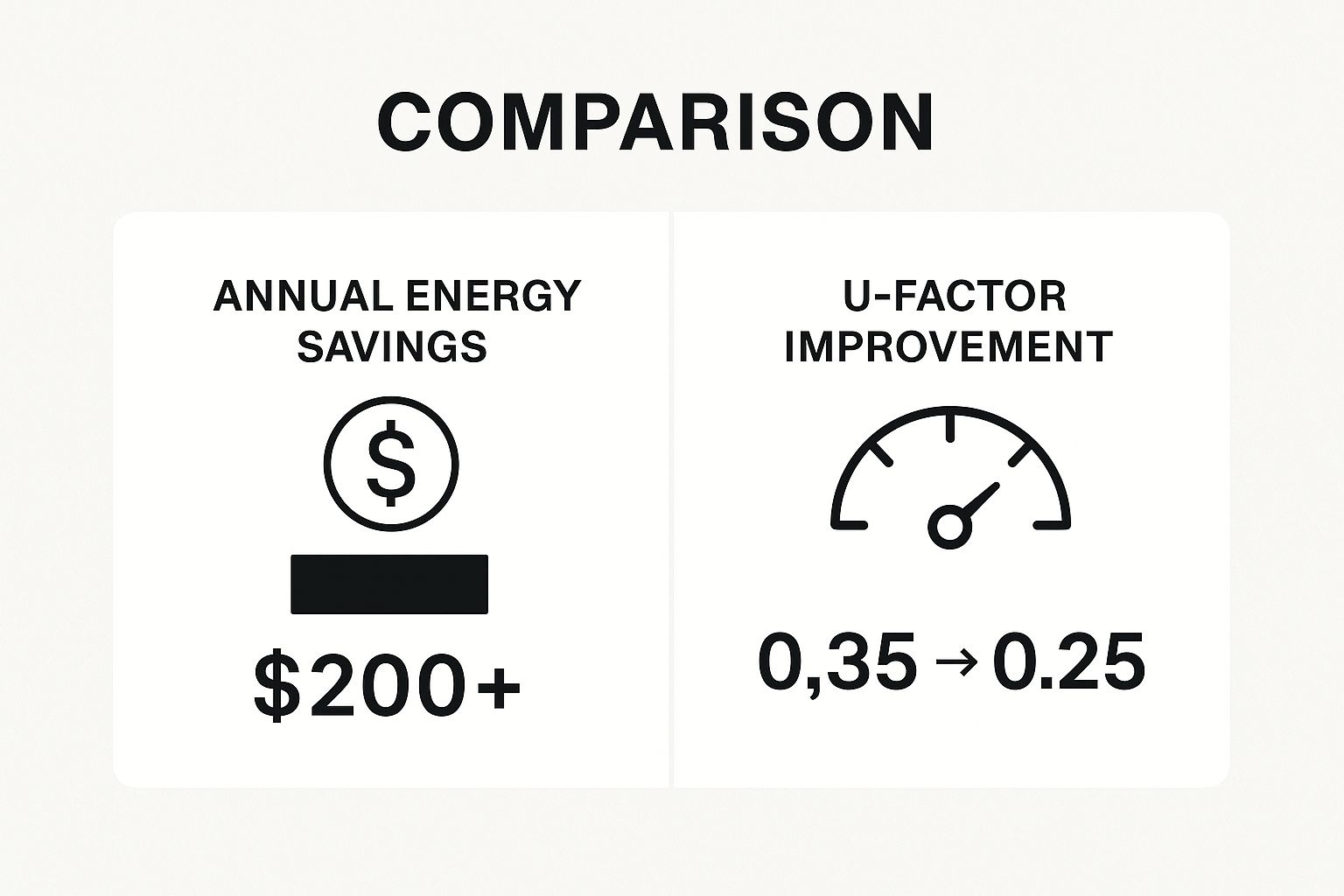
As this Energy Star chart shows, upgrading from single-pane to energy-efficient windows can lead to significant annual savings, reinforcing their value.
Wood for Timeless Architectural Charm
For historic homes in neighborhoods like Berkeley or Alameda, nothing replicates the classic warmth of wood windows. They are essential for preserving the architectural integrity of Craftsman, Victorian, and other traditional Bay Area styles.
Of course, wood frames require periodic painting or staining to protect them from moisture and sun. For clients who want the look without the upkeep, builders often specify wood-clad windows.
- Exterior: The outside is protected by a durable layer of aluminum or fiberglass for excellent weather resistance.
- Interior: The inside remains beautiful, stainable wood, delivering that classic character.
This hybrid approach offers the best of both worlds. To see this stunning combination, discover the beauty of Marvin Ultimate windows, a top choice for high-end residential projects across the East Bay.
Vinyl and Aluminum Options
High-quality vinyl and aluminum windows also have their place in the market. Modern vinyl is a fantastic, cost-effective solution offering excellent energy efficiency with minimal maintenance, making it a practical choice for many remodels and new builds.
Thermally-broken aluminum frames, prized for their strength and slender profiles, are perfect for creating a sleek, contemporary look. They provide much better performance than older aluminum and are well-suited for custom homes with large expanses of glass.
Why High-Performance Glass Is a Game-Changer
While frames provide the structure, the glass does the heavy lifting in a modern window. The glazing package is what truly separates today's windows from older, inefficient models, transforming a home's energy use and comfort.

At its core is the insulated glass unit (IGU), a sealed unit of two (double-pane) or three (triple-pane) glass layers. The space between the panes is filled with an inert gas like argon, which is denser than air. This creates a powerful thermal barrier, slowing heat transfer.
The Power of Low-E Coatings
The most critical component is the Low-E (low-emissivity) coating. This transparent, microscopic layer of metallic oxides acts as a smart filter for sunlight.
It works by reflecting specific types of energy while letting visible light pass through.
- In Summer: Low-E coatings reflect the sun’s long-wave infrared heat away from the window. This is a huge benefit for keeping homes cool in Walnut Creek or Pleasanton, reducing the load on air conditioning systems.
- In Winter: The coating reverses its role, reflecting furnace-generated heat back into the room to keep interiors warmer and prevent energy from escaping.
This technology is a primary reason modern windows significantly reduce energy bills. Learn more in our guide on choosing energy-efficient windows.
An investment in a superior glass package pays dividends in both comfort and lower utility costs. It’s the difference between a window that just fills an opening and one that actively improves a home's performance.
With a deep bench of skilled contractors in the East Bay, you can be confident that these advanced window systems will be installed correctly to perform as designed.
Making a Smart Investment in Your Property
Upgrading to high-performance windows is more than a renovation—it's a sound financial move. For homeowners and builders, choosing quality windows in the East Bay adds measurable value that stands out in our competitive real estate market.
This upgrade is an investment that can pay for itself through increased property value and energy savings. Savvy buyers and appraisers take note of homes equipped with durable, energy-efficient solutions.
Boosting Resale Value and Marketability
A property with new, high-performance windows holds a clear advantage. For builders and architects in discerning markets like Berkeley and Oakland, specifying the right windows makes a new build or remodel far more appealing to buyers.
This single upgrade communicates that the home is modern, well-maintained, quiet, and efficient to run. For those looking to fund such impactful improvements, it’s worth exploring fix-and-flip financing options.
In the East Bay, a home’s energy rating and aesthetic appeal are core components of its market value. A window upgrade is one of the most reliable ways to improve both simultaneously.
Beyond curb appeal, the long-term savings seal the deal. Lower utility bills are a concrete benefit that homeowners appreciate for years to come. For more detail, read our guide on the key considerations when choosing windows and doors.
Your Next Step: See the Quality Firsthand
You’ve done the research and reviewed the data on U-factors and frame materials. But reading about performance is one thing; operating a beautifully crafted window and seeing the finishes firsthand makes the decision click.
This is where consulting a professional makes all the difference. An experienced window expert can guide you through options from top brands, ensuring the quality windows you choose for your East Bay project are a perfect match for your goals.
A dedicated professional helps you navigate every detail, from final measurements to hardware selection, giving you complete confidence in your investment.
They can answer project-specific questions and help you map out a complete solution. For a holistic approach, it's also a good idea to explore various home energy efficiency services that complement your window upgrade.
Ready to see and feel the difference? Visit our Berkeley showroom or contact our experts today! We’re here to help you make a choice you’ll be happy with for decades.
Frequently Asked Questions About East Bay Windows
We’ve heard just about every question from builders, architects, and homeowners about choosing windows. Here are concise answers to some of the most common inquiries we receive.
What is the most important window rating for the Bay Area climate?
For most of the East Bay, the Solar Heat Gain Coefficient (SHGC) is critical. A low SHGC helps block intense summer sun, keeping cooling costs down. That said, a low U-factor remains important for insulation, especially for projects in cooler coastal areas or the hills.
Are vinyl windows a good choice for a home in Oakland?
Yes, high-quality vinyl windows are an excellent and popular choice for Oakland homes. They offer great energy efficiency, require very little maintenance, and are available in versatile designs that fit a wide range of architectural styles, from bungalows to modern new builds.
Do I need a permit to replace windows in Berkeley?
Yes, in almost all cases. The City of Berkeley requires a building permit for window replacements to ensure the new units comply with current Title 24 energy codes and egress safety requirements. Always confirm with the local building department.
How much value do new energy-efficient windows add?
While an exact ROI varies, the NAHB reports that new windows are a top-rated home improvement for recouping costs at resale. Buyers value the immediate boost in curb appeal, improved comfort, and long-term energy savings.
What is the difference between "new construction" and "replacement" windows?
It all comes down to the installation method. New construction windows have a nailing fin on the exterior that attaches directly to the wall framing, ideal for new builds or major remodels. Replacement windows are designed to fit into an existing window frame, making installation faster and less invasive.
Have more questions? Find more answers on our complete frequently asked questions page.
Ready to see the difference quality makes? Visit the Truitt & White Berkeley showroom for expert advice. https://truittandwhite.com/connect-with-us





